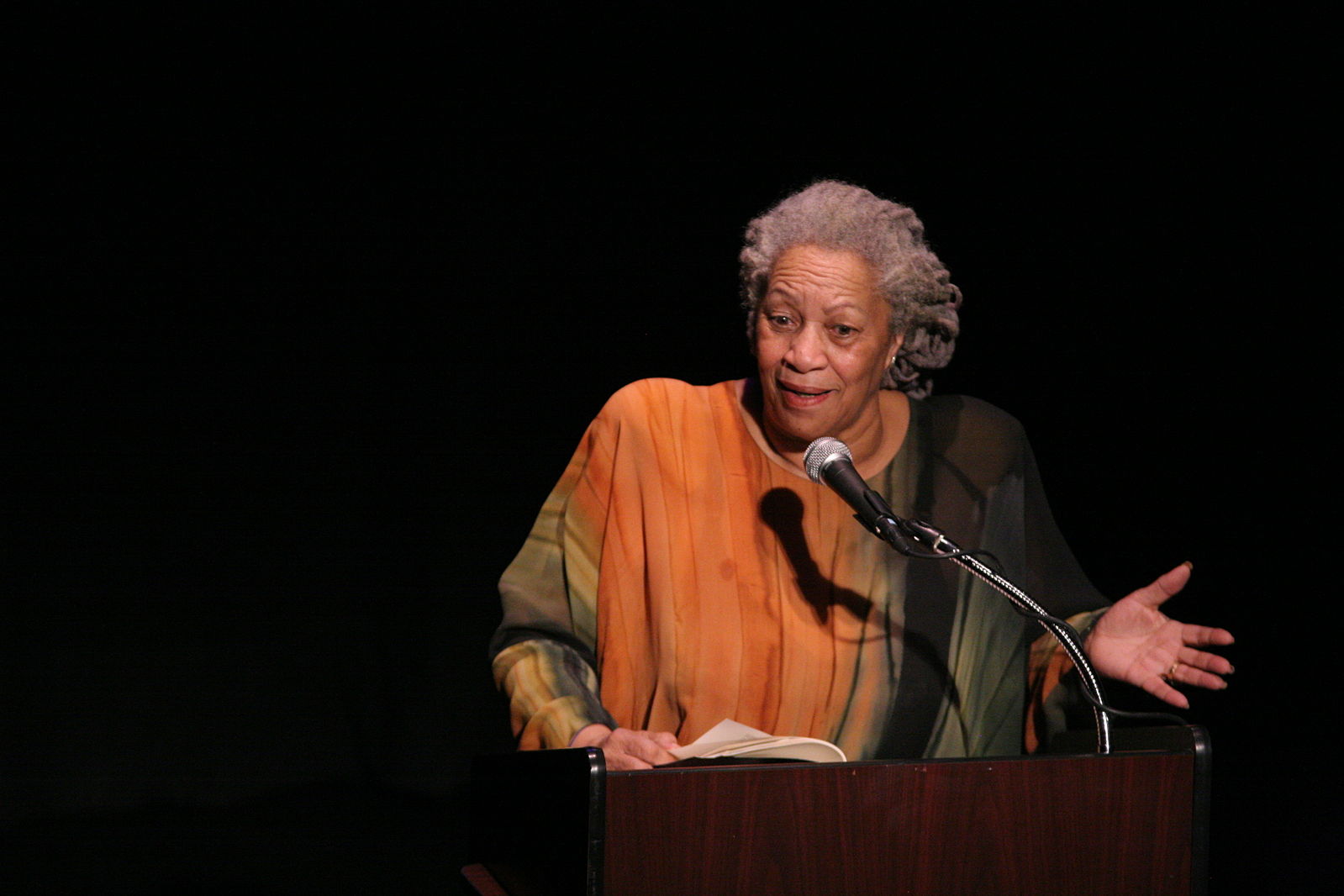Toni Morrison Lists the 10 Steps That Lead to Fascism: From Constructing an Enemy, to Maintaining Silence at All Costs

Image by Angela Radulescu, via Wikimedia Commons
The term fascism gets thrown around a great deal these days, not always with high regard to consistency of meaning. Much like Orwellian, it now seems often to function primarily as a label for whichever political developments the speaker doesn’t like. Even back in the 1940s, Orwell himself took to the Tribune in an attempt to pin down what had already become a “much-abused word.” Half a century later, the question of what fascism actually is and how exactly it works was addressed by another novelist, and one of a seemingly quite different sensibility: Toni Morrison, author of The Bluest Eye and Beloved.
Fascism tends to come along with evocation of Nazi Germany. In her 1995 Charter Day address at Howard University, Morrison, too, brought out the specter of Hitler and his “final solution.” But “let us be reminded that before there is a final solution, there must be a first solution, a second one, even a third. The move toward a final solution is not a jump. It takes one step, then another, then another.” She proceeded to lay out a haunting hypothetical series of such steps as follows:
- Construct an internal enemy, as both focus and diversion.
- Isolate and demonize that enemy by unleashing and protecting the utterance of overt and coded name-calling and verbal abuse. Employ ad hominem attacks as legitimate charges against that enemy.
- Enlist and create sources and distributors of information who are willing to reinforce the demonizing process because it is profitable, because it grants power and because it works.
- Palisade all art forms; monitor, discredit or expel those that challenge or destabilize processes of demonization and deification.
- Subvert and malign all representatives of and sympathizers with this constructed enemy.
- Solicit, from among the enemy, collaborators who agree with and can sanitize the dispossession process.
- Pathologize the enemy in scholarly and popular mediums; recycle, for example, scientific racism and the myths of racial superiority in order to naturalize the pathology.
- Criminalize the enemy. Then prepare, budget for and rationalize the building of holding arenas for the enemy-especially its males and absolutely its children.
- Reward mindlessness and apathy with monumentalized entertainments and with little pleasures, tiny seductions, a few minutes on television, a few lines in the press, a little pseudo-success, the illusion of power and influence, a little fun, a little style, a little consequence.
- Maintain, at all costs, silence.
Like any good storyteller, Morrison stokes our imagination while turning us toward an examination of our own condition. Over the past quarter-century, many of the tendencies she describes have arguably become more pronounced in political and media environments around the world. A 21st-century reader may be given particular pause by step number nine. Since the 1990s, and especially in Morrison’s homeland of the United States of America, most entertainments have only grown more monumental, and most pleasures have only shrunk.
Later in her speech, Morrison foresees a time ahead “when our fears have all been serialized, our creativity censured, our ideas ‘market-placed,’ our rights sold, our intelligence sloganized, our strength downsized, our privacy auctioned; when the theatricality, the entertainment value, the marketing of life is complete.” Few of us here in 2022, whatever our political persuasion, could argue that her predictions were entirely unfounded. Fewer still have a clear answer to the question what to do when we “find ourselves living not in a nation but in a consortium of industries, and wholly unintelligible to ourselves except for what we see as through a screen darkly.”
via Kottke
Related Content:
Umberto Eco Makes a List of the 14 Common Features of Fascism
Why Should You Read Toni Morrison’s Beloved? An Animated Video Makes the Case
Based in Seoul, Colin Marshall writes and broadcasts on cities and culture. His projects include the book The Stateless City: a Walk through 21st-Century Los Angeles and the video series The City in Cinema. Follow him on Twitter at @colinmarshall or on Facebook.
Toni Morrison Lists the 10 Steps That Lead to Fascism: From Constructing an Enemy, to Maintaining Silence at All Costs is a post from: Open Culture. Follow us on Facebook and Twitter, or get our Daily Email. And don't miss our big collections of Free Online Courses, Free Online Movies, Free eBooks, Free Audio Books, Free Foreign Language Lessons, and MOOCs.
from Open Culture https://ift.tt/3I2h0iH
via Ilumina
Comments
Post a Comment